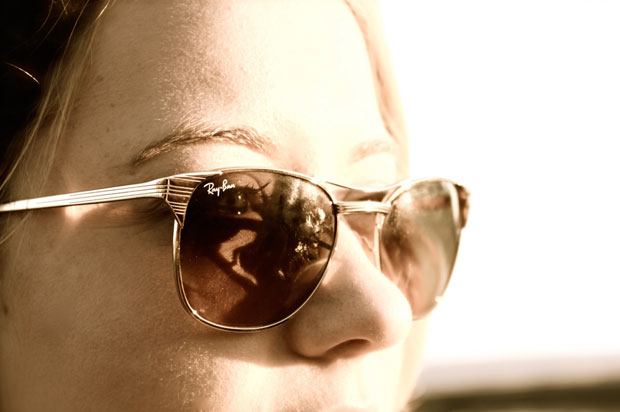Sun safety and skin cancer

She took all her holiday pics in sepia to hide her sunburn
Desperate for a tan? Get clued up on the risks to stay safe. After too much exposure to UV radiation from tanning beds and the sun, cancer can get its ugly claws into your skin. Read on to learn how to keep yourself protected, and how to tell if you have melanoma skin cancer.
Do I really need to worry about sun safety?
Yes, because:
- 1.The risk factors for skin cancer are increased by the powerful radiation waves the sun gives off, and an estimated 2,200 people die from skin cancer every year.
- If you’re not careful you could get sunburnt. This is when your skin gets red and sore and sometimes blisters – it’s painful.
- If you’re in the sun too long you can get heat exhaustion, which involves feeling dizzy, nauseous and getting headaches.
- The giant peeling lobster look is not attractive.
Does tanning give you skin cancer?
Tanning doesn’t automatically give you skin cancer but it increases the risk of you developing it.
Tanning is how your skin protects itself from the sun. Your skin creates melanin, a brown coloured pigment, which is why you go darker. But, a tan is still evidence that UV rays have damaged your skin already, and if the damaged skin cells can’t repair themselves, they could become cancerous. It’s not just about exposure to the sun, cancer develops from exposure to UV radiation, meaning tanning beds have the same risks.
Sunburn is really bad for your skin. Some experts think that getting blistering sunburn before the age of 20 doubles your chance of getting skin cancer.
Using a sunbed before you’re 35 increases your risk of skin cancer by 75%. See our article ‘are sunbeds bad for you’ to learn more.
How can I protect my skin?
If you’re on holiday, or it’s miraculously sunny here in the UK, wear sun cream. Use at least SPF 15, or much higher if you burn easily. Put it on half an hour before you go into the sun, then several times a day and make sure you put it everywhere.
Use water-resistant cream if you’re planning on swimming, and put more on when you get out of the water.
Don’t stay in the sun for too long, and stay in the shade between 11am and 3pm.
Remember you could still burn when you’re walking around in the sun. So cover up with a hat, sunglasses and a T-shirt.
Be as careful in the UK as you would be abroad – it’s the same sun after all.
What are the symptoms of skin cancer?
There are two types of skin cancer, non-melanoma and malignant melanoma.
Non-melanoma is the most common cancer in the UK, and is linked to UV rays from the sun and sunbeds.
The main symptoms of non-melanoma skin cancer is an abnormal lump or patch on the skin. It could appear as a:
- A red or pink lump.
- A flat scaly patch of skin, which is either flesh-coloured or brown.
- A spot or sore that continues to itch, hurt, scab, crust or bleed.
If any of these last longer than 4 weeks you should see your GP. It’s not necessarily cancer, but you should check. Treatment for non-melanoma skin cancer is successful 70-90% of the time.
How to tell if you have melanoma skin cancer
Malignant melanoma is less common, but a lot more serious because it can spread to other parts of the body. More than 2000 people in the UK die because of melanoma every year. It’s linked to UV rays from the sun as well.
The first sign of melanoma is an existing mole changing appearance or a new mole appearing. A normal mole is usually an evenly colored brown or black. If you have one that is multicoloured, that might be a sign you’re developing skin cancer.
I’ve got a weird mole – could it be cancer?
It’s normal to have a few moles, most won’t be cancerous. To tell the difference between a normal mole and a melanoma, use the ABCDE checklist:
Asymmetrical – melanomas have an irregular shape of two halves.
Border – is it uneven and ragged, unlike a normal mole?
Colours – a melanoma is a mix of two or more colours.
Diameter – a melanoma is larger than 6mm (about the size of a pencil eraser).
Enlargement or evolution – it’s changed how it’s looked over time.
If you’re concerned about a mole you should see your GP as soon as possible. See our article on how to find a doctor for help.
Next Steps
- You can visit NHS Choices for more information. You can get quick advice when it's not an emergency on 111.
- Chat about this subject on our Discussion Boards.
By The Mix Staff
Updated on 02-Nov-2022
No featured article










